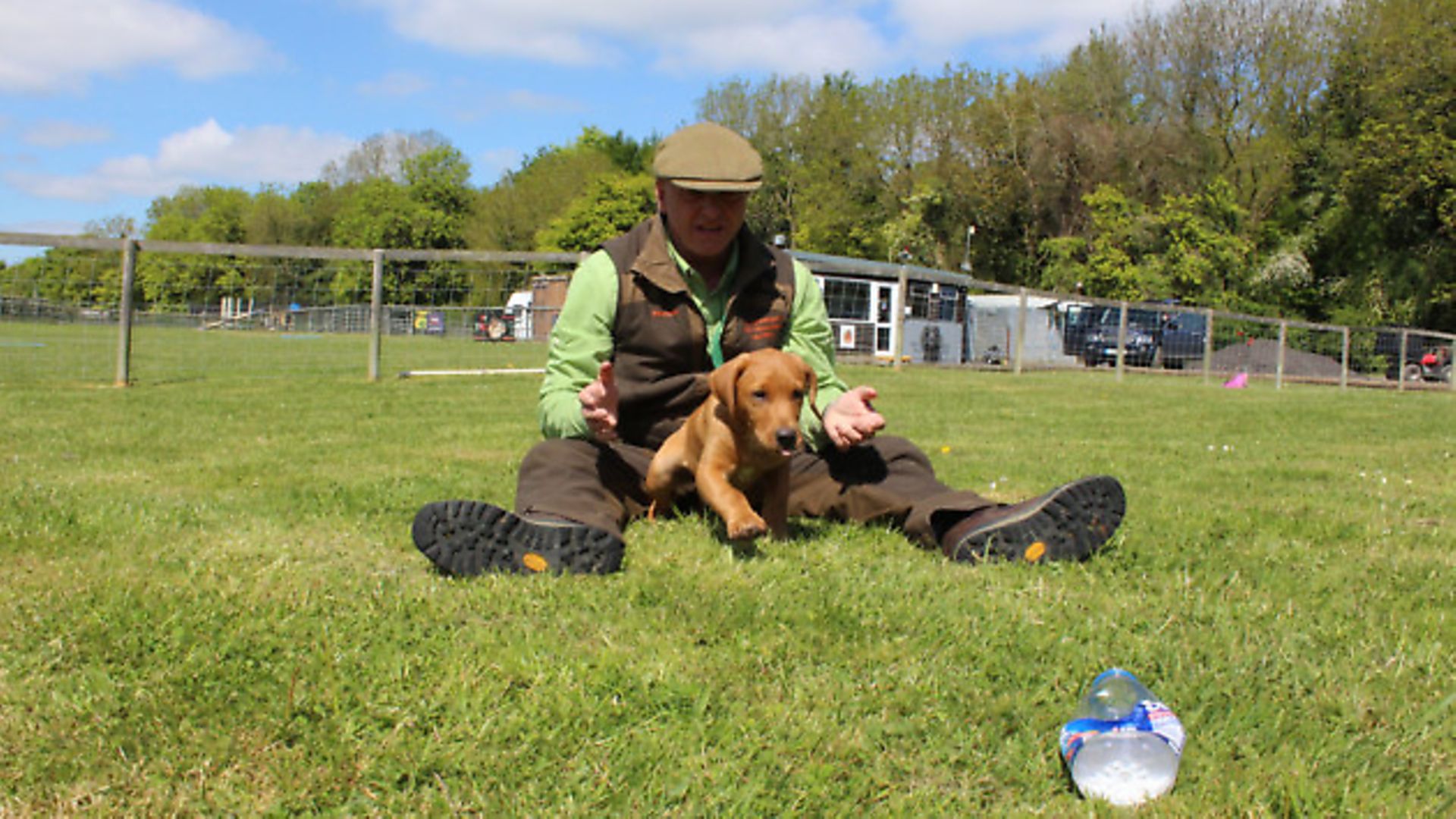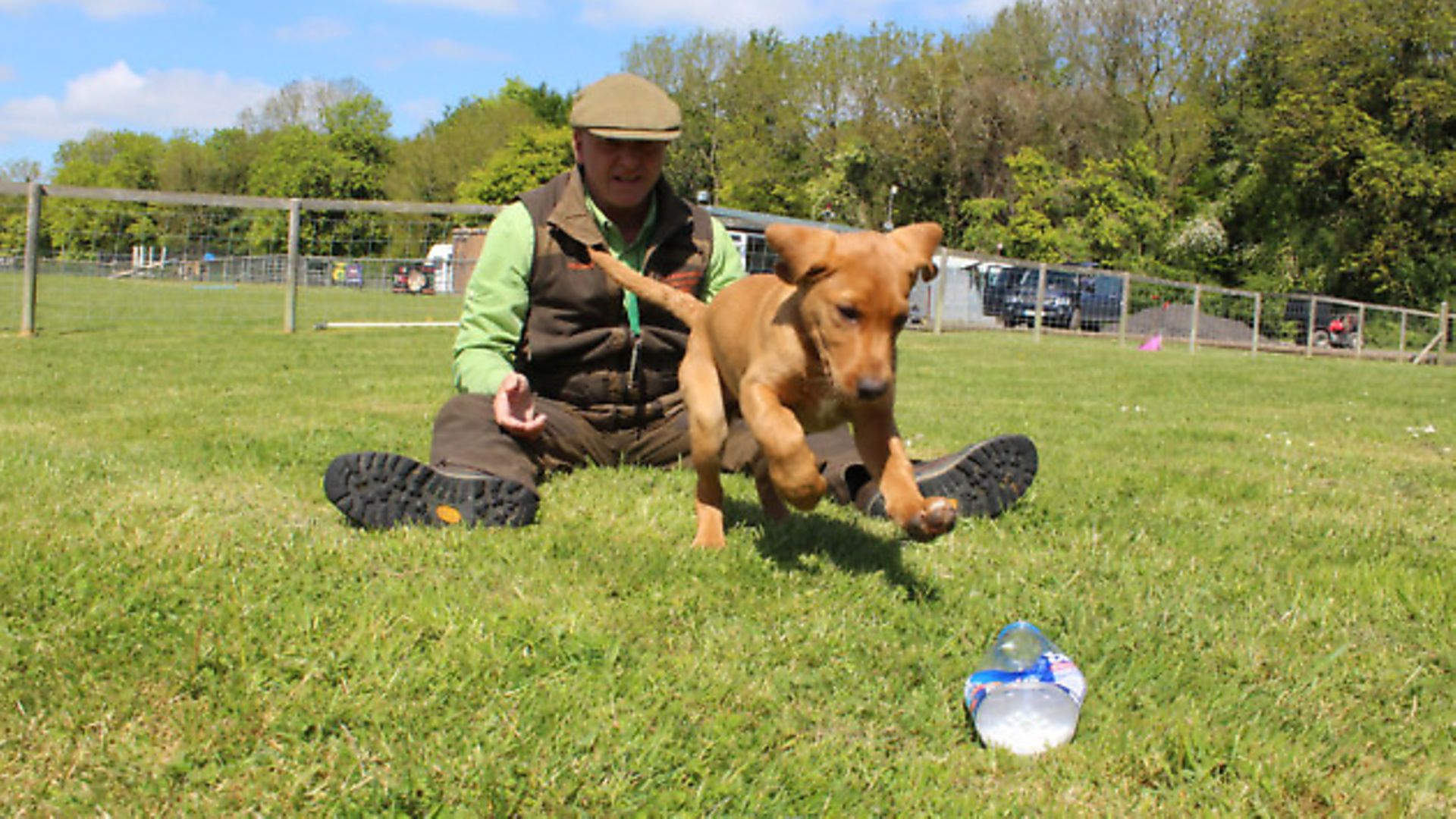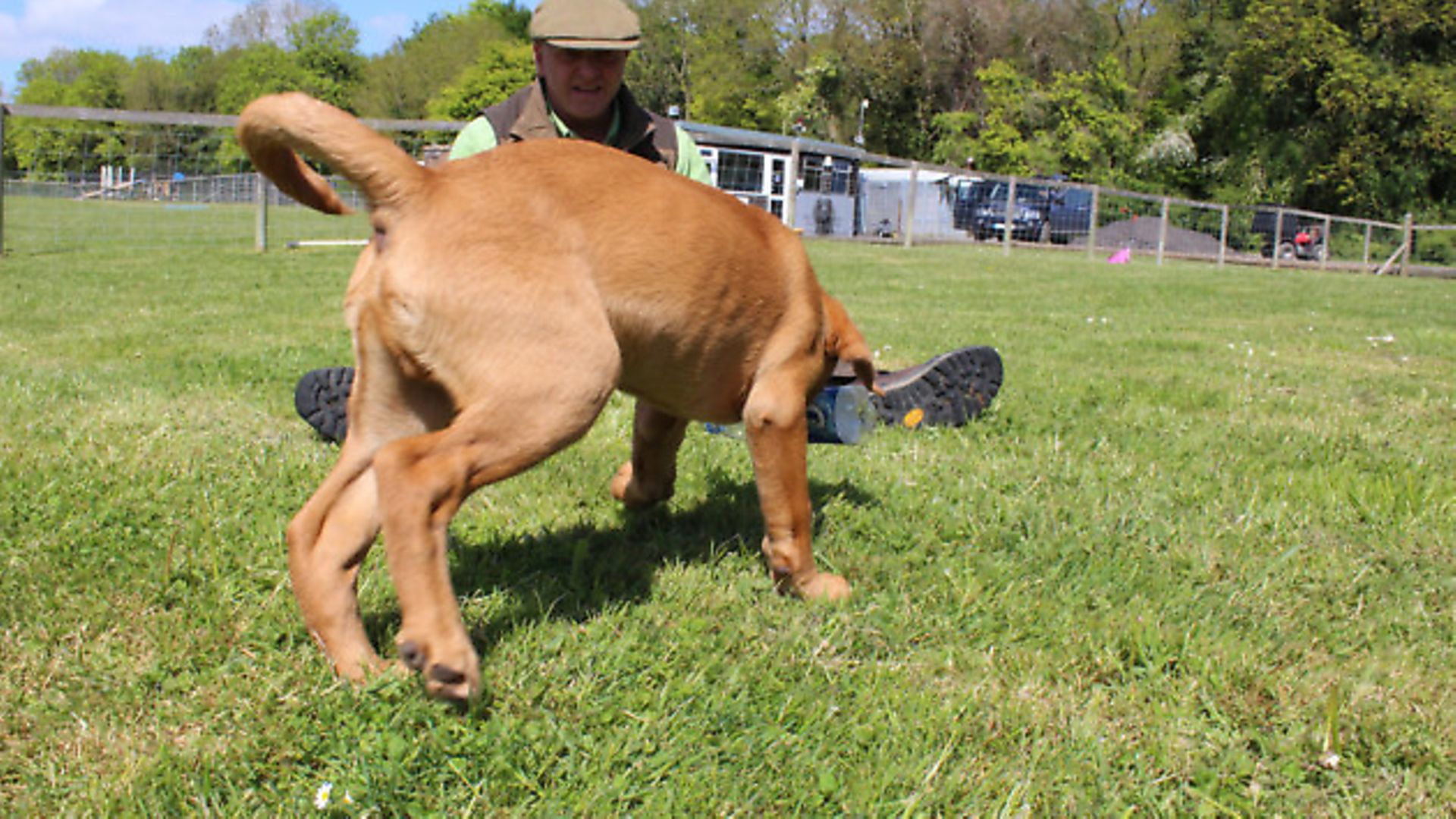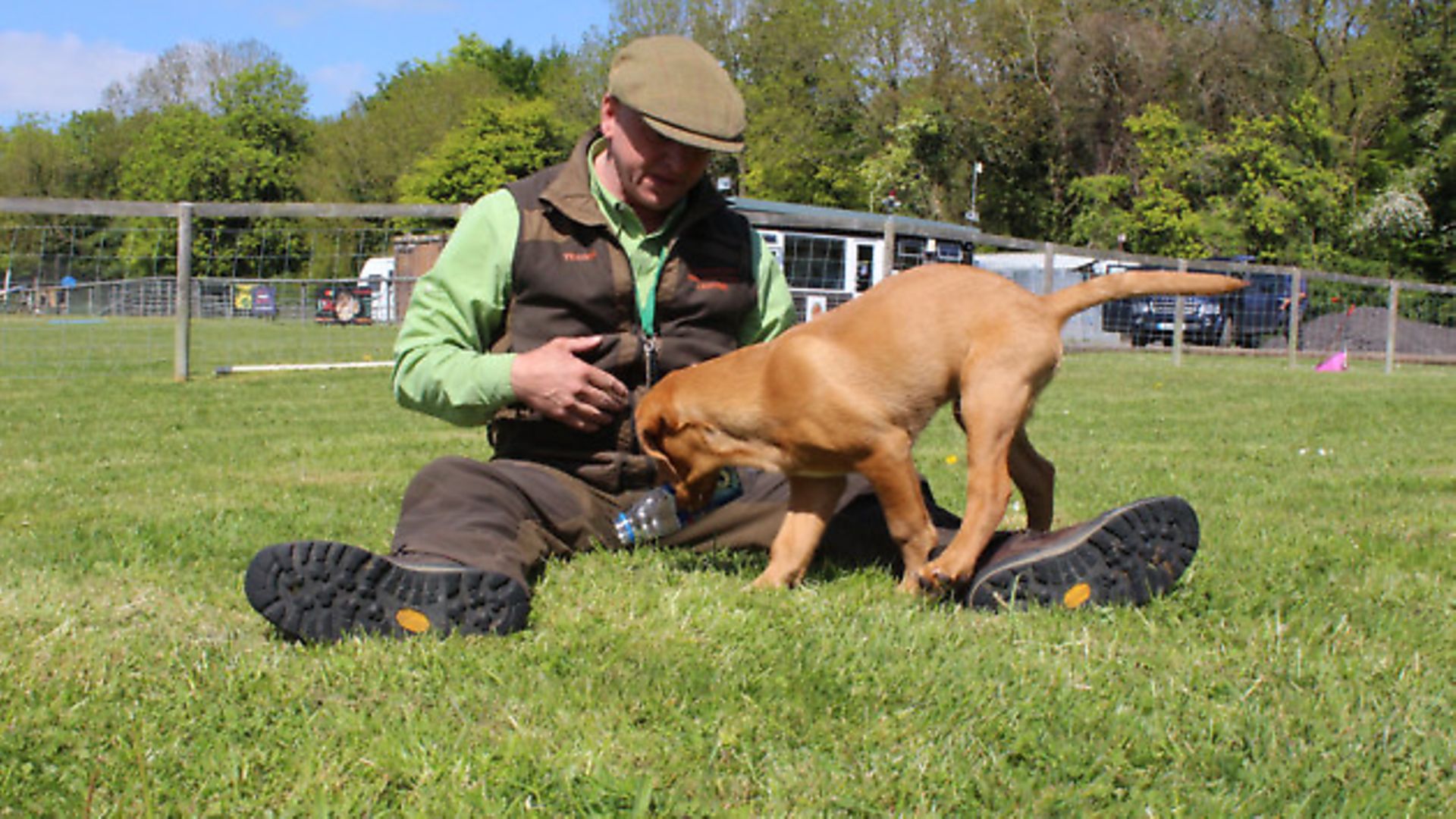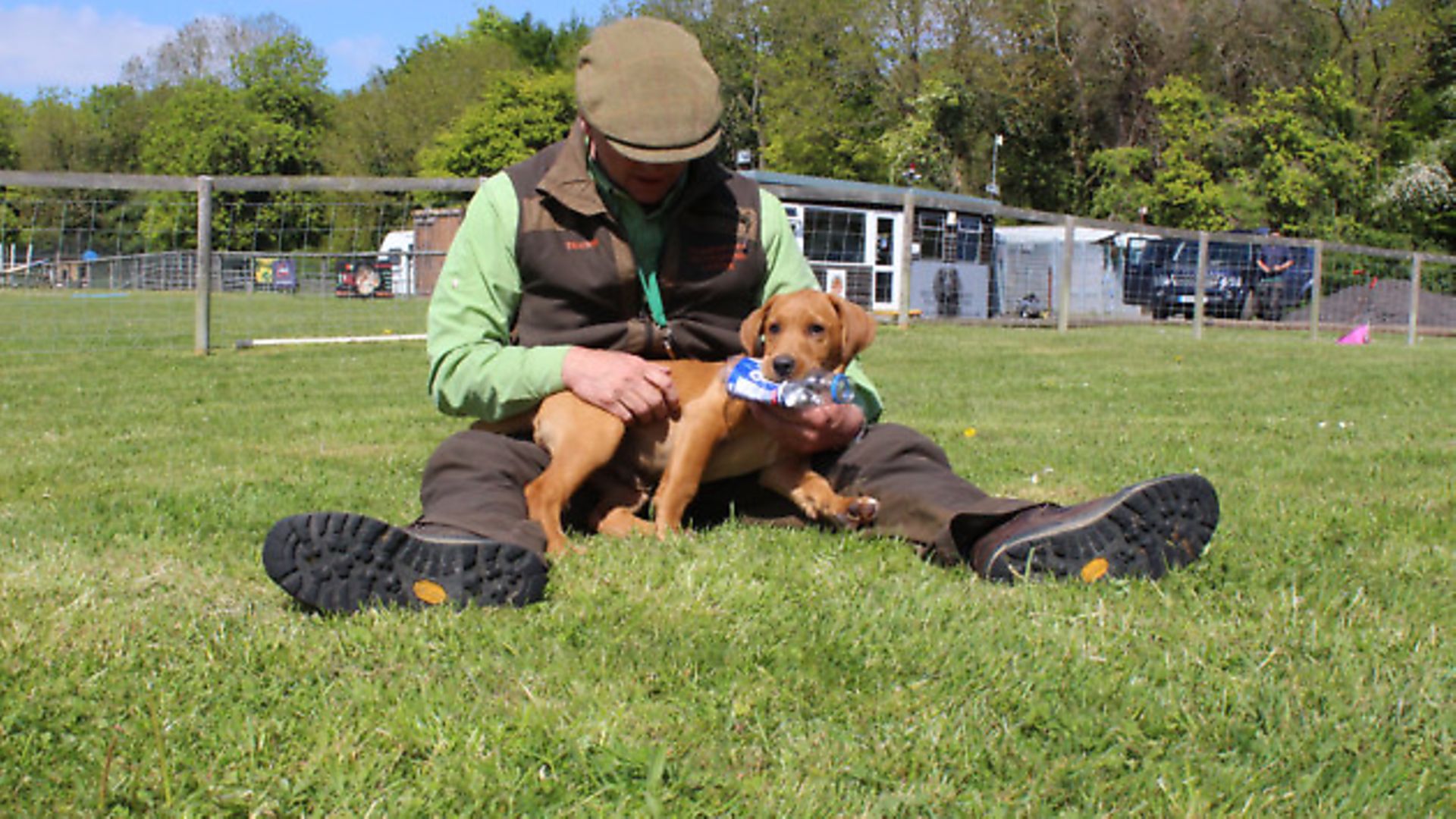Build prey drive in your gundog
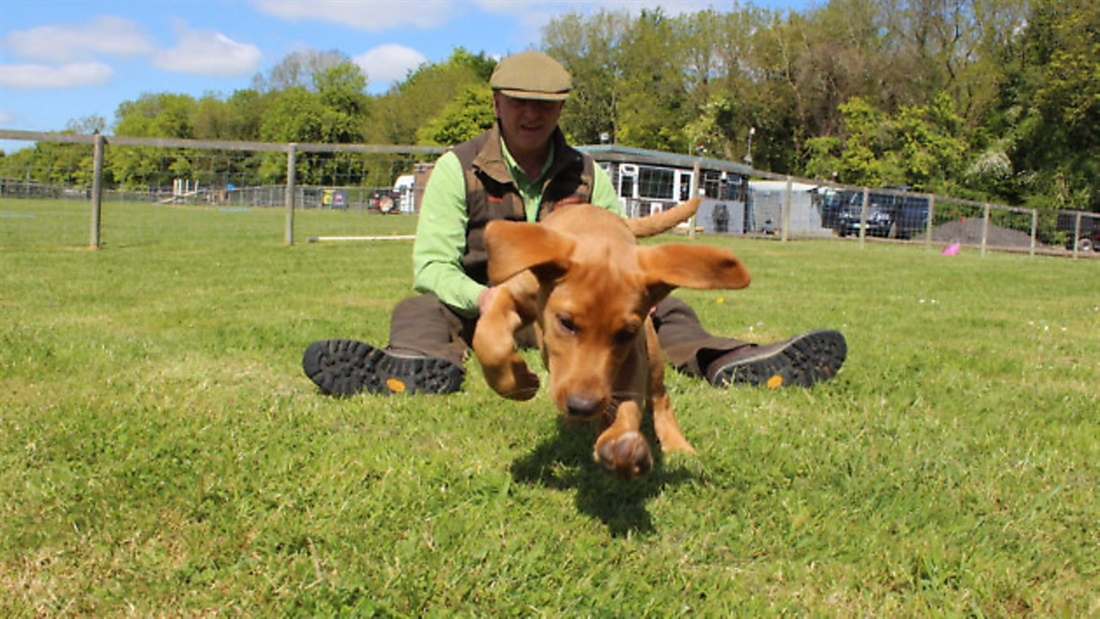
Building prey drive in your young gundog – with Howard Kirby
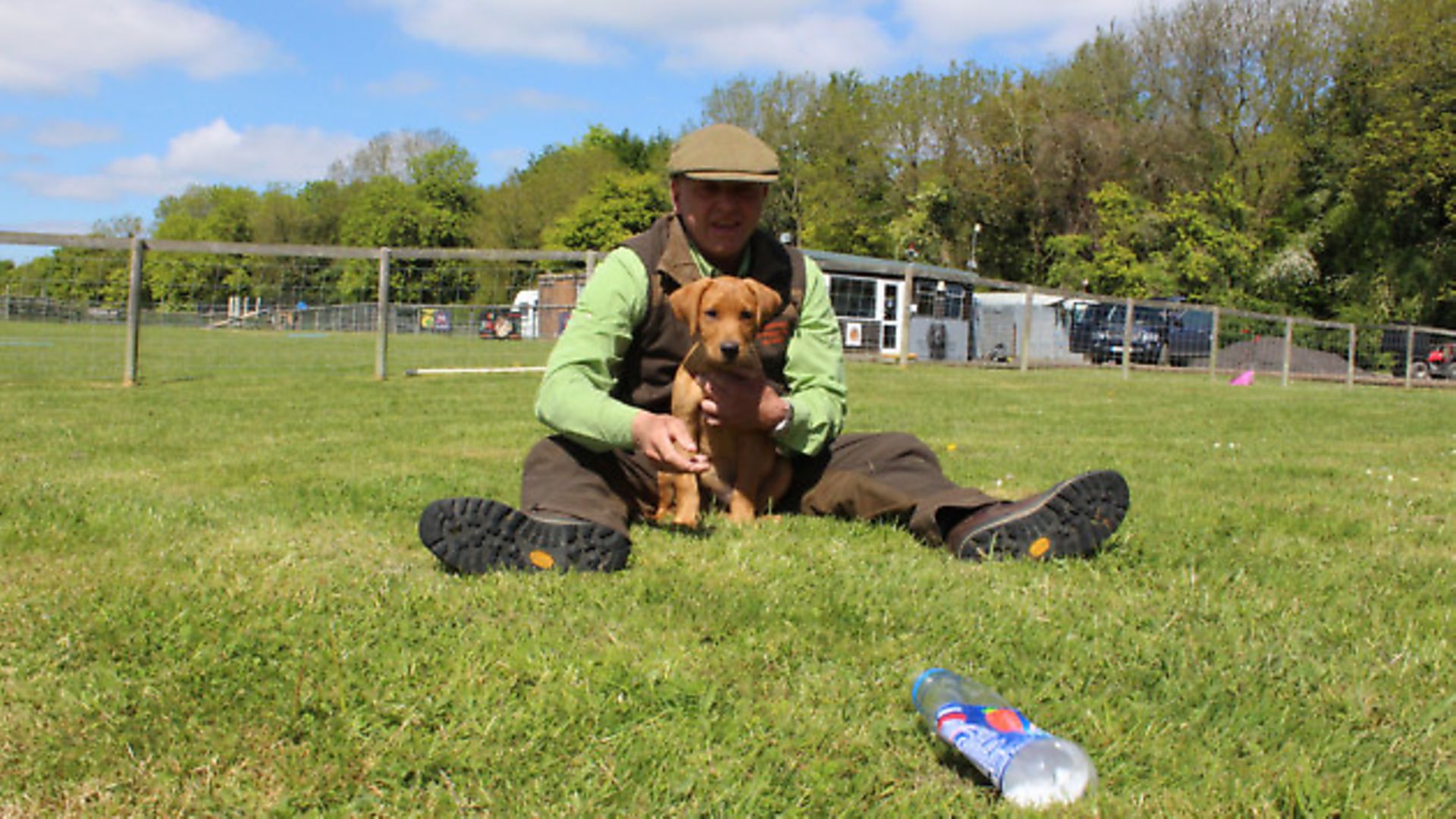
Understanding dogs, and what makes them tick, is something that fascinates me, and if you are going to be successful in training your dog you will need to have a bit of a think about some of their thoughts, too. We know and accept that the best way to train our dogs is to reward them when they offer a behaviour that we like and wish them to repeat. For example, when a young puppy rushes inquisitively to us we reward it with affection, food or some kind of play. If done correctly, the pup gets pleasure from one or all of these and looks to you for this reward next time it sees you.
So now that we understand this reward-based principle we can not only reward behaviours that the puppy offers but we can also engineer a whole list of others that we might wish the dog to perform. This is generally recognised as basic training, i.e. recall, sit, watch me, stay, the ‘at heel’ position, and then heelwork itself. To build and shape these behaviours you will need to coax the dog into these actions, reward and then add a cue word or whistle sound in order that the dog learns by association that, when he is given a cue, he must perform certain behaviours in order to receive a reward (try our Mullenscote DVD: Foundation Training, The First Four Weeks). Once again, these rewards can be given through affection, play or food.
Let’s take a minute now to think a little bit more about what’s going on in the dog’s mind. So the dog wants the reward; he either figures out a strategy for himself or you help him to engineer one that gets him the reward. Provided that he knows how to, and that the reward is of a high enough value to him to make him want it, then the dog will offer the behaviour we want. ‘So if I run up to and sit looking lovingly at the fat bloke in the stupid hat he will give me food,’ thinks Fido. It’s fairly simple, really; your dog will work out a strategy that gives him the things he wants. It’s important to remember that this can work against us as well; if you give him the opportunity to find, chase and catch rabbits and game without you, then it’s highly likely that this is exactly what he will look to do. This will result in the dog hunting away from you, which can then become a real problem.
My advice to you is that you work to a plan that keeps your dog thinking that if he ‘looks’ to you for help and guidance that you will in fact be the source of many rewards; for the gundog, you will help him to ‘get the prey in his mouth.’ Convince the dog of this and he will adore you.
So how are we going to do this? First and foremost, do your research well and ensure your puppy comes ‘pre-loaded’ with plenty of prey drive; the puppy’s lineage should be one that, amongst many other qualities, provides him with a strong desire to chase, pick things up and bring them back to you (the retrieve). Without a natural desire to do this you will really have your work cut out. Of course, it is possible to teach the youngster to want to retrieve, but the future is so much easier if he already has the drive to do this.
There are many views and opinions as to how one should train dogs, and of course the vast majority of these work for those who give the advice. Whenever possible, my advice is to do your best to manage your puppy’s day-to-day environment so that you reduce the development of unwanted behaviours by not exposing him to things that might do just that.
This article is primarily focused on the retrieve and managing our dog’s drive to want to play this game, so let’s take a look at the things that might help…
Time to cuddle
While your puppy is still young spend time with him on your lap. My girlfriend spends 10 to 20 minutes whenever possible sat quietly on the floor with the puppy and a really tasty chew stick. She offers the pup the chew but maintains a hold of it and the puppy. Very quickly the puppy settles and quietly gnaws away on the chew. Although at face value this might look insignificant, it gets the youngster very comfortable with being up close and personal with the handler, and most importantly dilutes any desire or anxiousness that might arise from ‘possession’, e.g. the puppy thinking, ‘No way am I going near her with this – she might take it off me.’ There is no doubt in my mind that this exercise has made delivery to hand much easier, not to mention all that is gained by cuddling puppies!
Exposure to toys
Ensure your puppy has plenty of things to chew, mouth and carry. I call this ‘hardware’, meaning purpose-built chews. Keep these things fresh and interesting – renew, replace and change them regularly. The ‘little monkey’ has to chew stuff – this will help to keep him occupied and away from your chair legs and computer cables. Meanwhile, access to ‘software’ (dummies, toys, etc.) comes from being directly involved with you, so that’s playtime, hunting, chasing, catching and bringing it back to you (retrieving). If you limit access to these exciting toys/dummies then you will be able to motivate the youngster to want to be with you.
Dummies
The value of the dummy to the dog will of course play a significant part in the success or failure of retrieving work. A high-drive dog will probably want to run and pick up anything you throw. (Do be mindful that some dummies, particularly those that have fur or feather on them, may make him possessive and reluctant to bring it back to you.) Dummies with cords, toggles, tags or floppy bits will often distract a youngster, so you might wish to avoid these and therefore remove the risk.
With dogs at the opposite end of the interest spectrum you will have your work cut out to get them interested. Experiment with toys or dummies of different types – if you can just find something that the puppy really wants in his mouth then life will be easier. Ensure the environment in which you initiate this early behaviour is as distraction-free as possible; indoors is usually the best option. This is a puppy that appears not to be that fussed about picking things up and carrying them. Why? Keep trying to see things from his point of view.
A technique that worked for a client whose working cocker had no interest in retrieving at all might interest you. The lady tried a variety of conventional retrieving methods before thinking slightly ‘outside of the box’. She took a ‘rabbit ball’ (a tennis ball covered in rabbit fur) and pushed it into a bag of the puppy’s daily feed. This was left for a week to absorb the smell and taste of the food. And, you guessed it, the puppy loved it and started retrieving it immediately. With careful management the puppy is now, just a couple of months later, retrieving with real drive and enthusiasm. This is one of those straightforward fixes that is well worth a note, but not all retrieving issues are as straightforward as this!
Another technique is to sit down on the floor and encourage the puppy to come up onto your lap. Keeping hold of the dummy, get him excited about it and then skid it across the floor. A ball can work well here as it generates a ‘chase drive’ in the dog. Assuming the puppy runs out and grabs the dummy, quietly encourage him to come back and sit on your lap. Well done – you have initiated the behaviour. We now have to ensure that this remains a real game and gives the dog pleasure. How, when and if to take the retrieve from the pup is very much trial and error. I would suggest that you gently secure him in your lap (this just stops him running away with the dummy) and very quietly stroke him while allowing him to keep hold of the dummy. From here we need to keep nurturing this behaviour; if you manage things carefully you will slowly but surely build higher levels of enjoyment/drive in the puppy.
The trained retrieve
Many UK trainers use a version of the trained retrieve that is based on clear, precise and gentle placing of the dummy in the dog’s mouth to teach first the hold, then layering up the exercise by asking the dog to pick up the dummy and hold, before moving on again and asking for a few paces towards the handler. This can then, slowly but surely, be built into a full retrieve. The reward and motivation here comes from the handler and their ability to communicate with the dog. This is something that requires real skill and a lot of patience, so do be sure to study the skill carefully before trying this out on your dog.
Another variable on this is to teach the dog that he will get a food reward if he retrieves the dummy. Once again, this is often taught using a layering or back-chaining technique. The technique starts by rewarding the dog for touching the dummy with his nose. Several sessions later the dog will be reliably touching the dummy and showing an understanding of what he has to do to receive a food reward. By withholding the food he can then be persuaded that he will need to do more to get the food. Small, closely linked changes are required and a programme starting with a touch with the nose, then lips, then teeth, and finally taking the dummy in his mouth are a common path to follow. Then we can ask him to pick up the dummy from the floor, then to move towards us, and finally we have a retrieve. Once again, this takes time; plan for a six-week programme and you will not be tempted to rush things.
So, a few thoughts, tips and ideas to think about and maybe use if things don’t quite go to plan. We’re blessed in the UK with fantastic breed lines within our gundog breeds. If you choose wisely your new pup will have tonnes of prey drive – he will want to chase, catch and carry things. Most will have an inbuilt desire to retrieve things and bring them back to you. Do as much as you can to avoid problems developing, follow the advice you get from trainers who repeatedly produce dogs that do what they’re supposed to, and retrieving should be fairly straightforward.
Most importantly, enjoy your dog and the time you spend training him. Come on, get out there – he won’t learn things laid on his bed. We’re out and about at numerous game fairs this summer so please drop in and let us know how you’re getting on.




